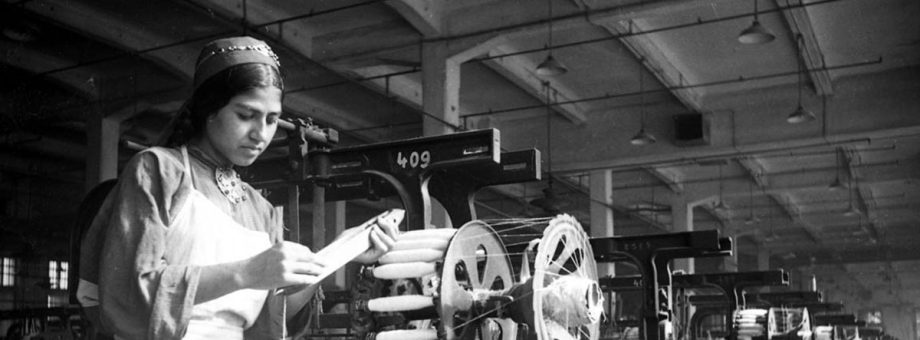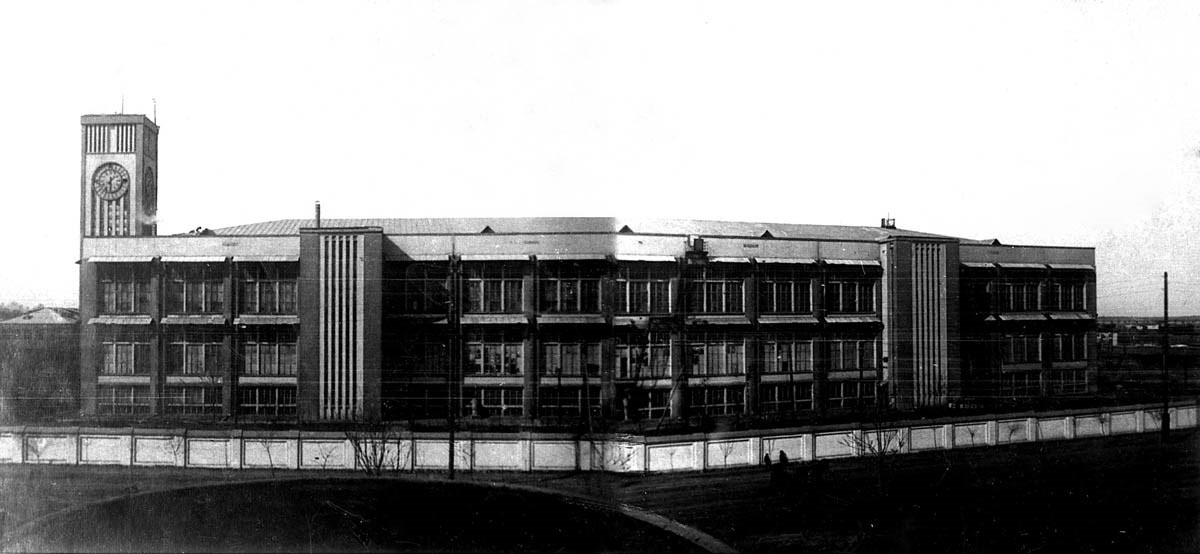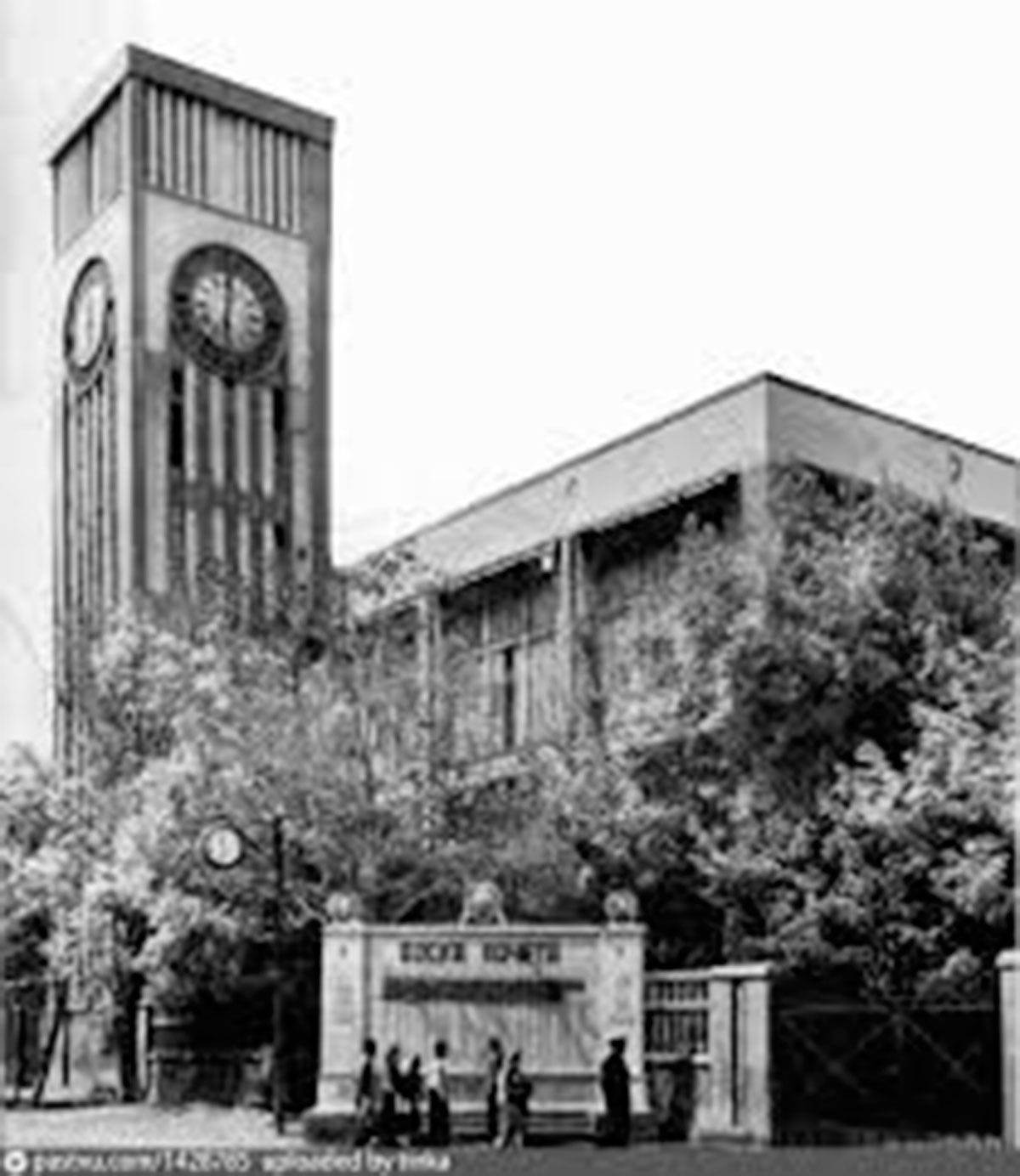Some little-known pages of the history of Turkmenistan’s first textile industry and its workforce

This anniversary year of Turkmenistan’s Neutrality marks one hundred years since the official transfer of the Reutov (Russia) textile factory to Turkmenistan. In 1924, the question arose of building Turkmenistan’s own textile factory, and in the future, organizing its own textile industry. To solve this challenging task, by the Decree of the USSR Council of Labor and Defense dated January 7, 1925, one of the best spinning factories in Russia – the Reutov factory – was transferred to the Turkmen SSR, which became known as the “Reutov Spinning Factory of the Turkmen Manufactory.”
Two years before the opening of the Ashgabat factory, national cadres began training. In those years, the factory was the only enterprise in Reutov (then a settlement), employing practically the entire adult population. The first group of 85 young Turkmens arrived in Reutov in May 1925. A vocational school was opened for Turkmen apprentices, where they were trained in professions such as spinner, roving worker, scutcher, inspector, and repairman. At the workers’ youth school at the factory, they could learn Russian and acquire other knowledge. The factory received Turkmen cotton, and the money earned from selling yarn was used for the construction of the Ashgabat enterprise.
By the end of 1929, the construction of the factory in Ashgabat was fully completed, the equipment tested and prepared for operation. In the same year, on November 19, the official launch of the enterprise took place—the Ashgabat Spinning and Weaving Factory named after F.E. Dzerzhinsky. The launch of this production marked the beginning of industrialization in the Turkmen Republic.

This first textile enterprise in Ashgabat was built according to a project prepared by scientists and engineering-technical workers from Moscow, Leningrad, and other industrial centers. The project work was led by two professors – V.M. Keldysh and V.M. Chaplin. The construction office “Tekstilstroy,” which erected the building, was headed by engineer L.G. Porokhin. Thanks to these people, on the night of October 6, 1948, during the catastrophic earthquake, the spinning and weaving factory building not only survived but saved 300 human lives—the night shift workers. The well-known clock tower of the main building is the only structure that remained undamaged in the terrifying disaster.
Simultaneously with the factory, in November 1929, two workers’ settlements for 3,100 people were commissioned in Ashgabat. On the territory of Turkmenistan’s first textile industry enterprise were kindergartens and nurseries, a medical station, shops, the vocational training school, and a general education school. The new enterprise’s capacity allowed processing one and a half tons of cotton and producing 10,000 meters of fabric daily through two shifts. The factory’s products were in great demand among consumers. Two-thirds of the high-quality cotton textiles produced were shipped outside the republic.
Subsequently, the trained national workforce became leading workers at their enterprise, and many of them eventually rose to become heads of enterprises, state officials and public figures of Turkmenistan. One such example was Ene Myalikgulyyevna Ovezova.
Born into a large family, she started working as an apprentice at the Ashgabat spinning and weaving factory in 1934. Even as a schoolgirl, she used to go to this enterprise to carry lunch to her parents who worked there. After the devastating earthquake on the night of October 6, 1948, she helped restore the factory. At the very beginning of her career, Ene operated only one machine, later working simultaneously on 16 and 32 machines. Each shift, she produced 2,500 meters of fabric.

During the war years of 1941–1945, the factory lost many highly qualified specialists. Male and female workers did not leave the factory for days on end. Among them were Ene Ovezova’s parents, who later became honored workers of Turkmenistan’s light industry and honorary citizens of Ashgabat. At that time, Ene was 14 years old, and she too came to the factory, helping the adults restore it. Then she joined the factory as a weaving apprentice and worked there for over fifty years without interruption.
Many years later, as a master of her craft, she was elected chairperson of the factory’s trade union committee, and in 1986 she began working as a production training master. E. Ovezova was repeatedly elected deputy of the Supreme Soviet of Turkmenistan. In 1960, by decree of the Presidium of the Supreme Soviet of the USSR, Ene Ovezova was awarded the title Hero of Socialist Labor for her outstanding merits in the development of the textile industry. In the years of independence, she was awarded the “Gayrat” and “For Love of the Fatherland” medals.
Another well-known graduate of the plant’s collective was Batman Bakiyev, born in 1904 in the village of Gonur, Mary etrap. One of the first who, after studying textile skills in Tver, began his work as a locksmith. After training in Tver at the Vagzhanov factory, B. Bakiyev returned to the plant and continued working as an assistant foreman. Having traveled a long career path from an ordinary worker to one of the factory activists, he was elected leader of the trade union organization and then sent to work in Tashkent to gain experience in the regional textile union organization.
Upon his return, he was assigned to work in the trade union line. Thus, from 1932 to 1935, B. Bakiyev worked as deputy chairman of the Turkmenistan trade unions. In subsequent years, a young capable and talented organizer worked in various party and Soviet positions, rising to deputy minister of the textile industry of Turkmenistan.

He was repeatedly elected deputy of the republic’s Supreme Soviet. For labor achievements, Batman Bakiyev was awarded the Order of the Red Banner of Labor, the Order of the Badge of Honor, and the Order of the Patriotic War, 1st class. Even in retirement, Batman Bakiyev did not forget the native plant collective and actively continued work in the public sphere.
Today, the textile industry is one of the leading sectors of the economy of independent, neutral Turkmenistan. Thanks to comprehensive state support, the tireless care of the President of Turkmenistan Serdar Berdimuhamedov and the National Leader of the Turkmen people, Hero Arkadag, it has become a dynamically developing branch of Turkmenistan’s economy. During the years of independence, more than two billion US dollars have been invested in the construction of new and reconstruction of existing textile enterprises. Currently, over seventy enterprises operate in the industry, including large textile complexes, cotton spinning and weaving productions, sewing factories, silk processing enterprises, shoe factories, and plants for primary leather and wool processing.
Extensive cooperation with foreign companies and international financial institutions, which ensure growth and further development of Turkmenistan’s textile industry, continues successfully. To address the tasks set by the President of Turkmenistan, a comprehensive sectoral program has been developed for the production and technical re-equipment of enterprises in the industry and the creation of innovative productions based on local natural resources.
Currently, about eighty percent of textile production is exported to CIS countries, Europe, Asia, and other parts of the world. Major consumers of Turkmenistan textile products include Turkiye, Russia, China, Kazakhstan, Armenia, Azerbaijan, Belarus, Ukraine, and Kazakhstan. Export supplies go to 15 countries worldwide. More than 30 enterprises are exporters.
It is noteworthy that today, as it was in the early years of the country’s textile complex formation, the industry remains a forge of national cadres for Turkmenistan’s light industry.


 NEWS
NEWS